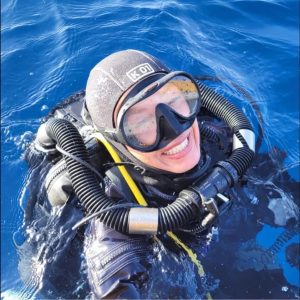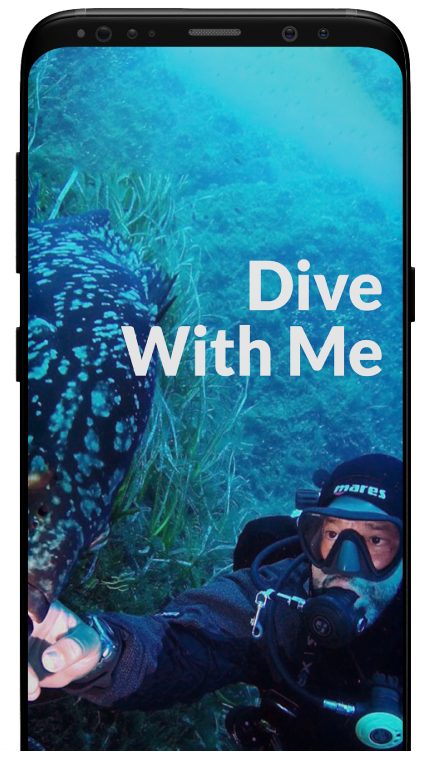We are moving towards sustainable fishing activities. New generation fishing nets, bioplastic mussel socks. Biodegradability, composting and recycling are the green missions of the future.
As mentioned in my previous article, intended to shed some semantic clarity regarding Biodiversity and especially Sustainability, we discovered that the latter indicates everything that does not impact the environment as well as the amount of resources for future generations.
Three types of sustainability
There are three types of sustainability: Environmental Sustainability, i.e. guaranteeing the availability and quality of natural resources, Social Sustainability, i.e. guaranteeing the quality of life, safety and services for citizens, and Economic Sustainability, i.e. guaranteeing economic efficiency and income for businesses.
Fish sustainability
Today we will talk about environmental sustainability and more particularly about Fish Sustainability. A very broad but also very controversial issue. The lack of clear guidelines and rules on this topic helps to keep a great deal of confusion in the minds of local operators and citizens.
Allowing the consumer to make a sustainable shopping does not present great difficulties. It would be enough to clearly indicate on the label the exact way in which the product was extracted from the sea. In compliance or not with the requirements relating to sustainable fishing.
Unfortunately, the core of the problem lies elsewhere and is much more complex: we are talking about microplastics and nanoplastics dispersed in the sea. As well as indiscriminate damage to fish, mammals, turtles, large cetaceans and even birds.
The problem of abandoned fishing nets
Fishing nets that are abandoned, lost or thrown overboard often represent an unknown but important slice of marine litter globally. Which generate serious consequences from an environmental and socio-economic point of view.
From various studies carried out, it is estimated that the loss of fishing nets can vary in a range from 0% up to 79.8% per year. Today, most of the fishing nets, but also of the nets used for aquaculture, are made of polyamide, a plastic not subject to abrasion caused by salt. The aim is to reduce its cost and increase its duration. Previously they were made of cotton.
Resolve the impact of abandoned fishing nets
Therefore, moving towards sustainable fishing activities, it is essential to act at the source of the problem: to replace plastic nets with others made of biodegradable or in any case less impactful material.
There are still numerous projects that aim at more sustainable management. What a rain on the development of innovative networks suitable for respecting biodiversity and the economic needs of all operators in the sector.
The Glaukos project
Think, for example, of the Glaukos project, the name of the Greek divinity of fishermen. It aims to develop innovative alternatives in the textile sector to better protect our oceans, reducing the Carbon and Plastic “footprint”.
These are biodegradable textile fibers, whose eco-toxicity will be reduced thanks to scientific studies. They are funded by a public-private partnership between the European Union and a consortium of industries working on bio-based technologies (European research program Horizon 2020).
The main objectives of the Glaukos project lie in increasing the bio-based percentage of polyesters and polyamides by at least 50%. To mitigate the pollution of microplastics by increasing the biodegradability rate of polyesters and polyamides by at least 100 times compared to what is currently on the market. And finally to reconcile technical performance as well as durability and enhance bio-recycling by bio-catalysis.
The Cozza Plastic Free project
Moving towards sustainable fishing activities, another Italian project, “Cozza Plastic Free”, which brings together Coldiretti, Impresa Pesca Campania, Federico II University, Novamont SpA and Legambiente Campania. Its aim is to replace plastic nets with Mater-bi nets in all mussel farms in the Campania region. A material composed of bio-plastic, biodegradable and compostable.
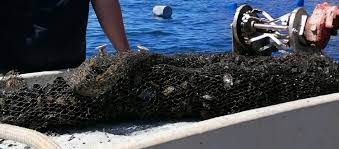
World production of mussels (European Market Observatory for Fishery and Aquaculture Products – EUMOFA) is over 2 million tons, of which half a million in Europe. In Italy, about 70 thousand tons are produced and in Campania, where the mussel enriches the Neapolitan culinary tradition, a production of about 5 thousand tons is estimated every year.
The stockings from mussel farming
In 2021, Legambiente highlighted that on 47 beaches monitored with the Beach Litter protocol, 36,821 types of waste ended up in the sea were recorded. Of these, more than 2,600 objects are attributable to fishing activities: fishing nets and tools and plastic aquaculture, fish boxes, lines, floats, containers for exits. Within this category, the most common. object (for 45%) are mussel stockings.
Going towards sustainable fishing activities, the adoption of alternative methods in the context of mussel farming is a necessary choice to protect our sea from the threat of microplastics, which can also end up in the food chain. The traditional stockings, as well as the current fishing nets, become special waste, to be disposed of according to precise and often difficult to support methods, at the landing ports. Bio-plastic nets, on the other hand, can be collected and sent for recycling in composting plants, obtaining fertilizer useful for agriculture. A circular economy process that falls within the national and European objectives of ecological transition.
https://eur-lex.europa.eu/legalcontent/IT/TXT/HTML/?uri=LEGISSUM:l28102&from=IT
If, on the other hand, these Mater-bi networks were to be dispersed and end up in the sea, they would degrade over a maximum period of 18 months. As evidenced by the research carried out to date on various products made from the bio-plastic produced by Novamont. The trial launched in March 2021 in five farms, between the coast Domitio and the Gulf of Naples, will serve to test the resistance at sea with respect to the different currents and the useful form for the growth of mussels. It will study the contribution of the material to the quality of the finished product and its performance in terms of sustainability and recycling.
The Seabird experience
Going towards sustainable fishing activities, now, I could not help sharing with you the goals already achieved by a French company in the context of bio-acceptable and compostable networks.
With the deserving ambition to fight against the accumulation of plastic in the oceans, due in particular to lost fishing nets, SeaBird, a company founded in 2011 with headquarters near Lorient, in the south-east of Bretagne, has developed a biodegradable net in the sea and compostable on land.
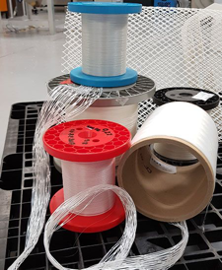
This is the first fishing net with these characteristics in Europe; it is composed of compostable bio-plastic (plant materials and recycled waste). It is adaptable to various fishing equipment and degrades in the marine environment. But not only that, it has a notable and adequate resistance to fishing activities. It also meets the regulatory needs in relation to eco-toxicity and the European REACH regulation.
https://eur-lex.europa.eu/legal-content/IT/TXT/?uri=LEGISSUM%3Al21282
The classic nets have a life span of about 4 months. But by accumulating sand, algae, stones and other forms of marine life, their recycling is very complex and does not happen often. Instead, with this new type of raw material, the same could be composted directly at the port of call. Or, if lost in the sea, they would be perfectly integrated into the local biodiversity within a few months.
The fishing boat Néréides II
In June 2020, the fishing vessel, le Néréides II, based in Boulogne-sur-Mer, embarked on 1000m of this innovative network which required 4 years of research and technical development. At the same time, trials for its recycling were launched as well as a targeted study on the continuity and generalization of the large-scale project. The extent of this biodegradable network embarked on the fishing boat has generated a yield rather equivalent to that of the classic network. As well as a similar degree of deterioration.
Faced with these excellent results, in July 2021, no less than 3000 m of the second prototype were loaded. Mechanical properties, structure and color have been improved. In order to get even closer to the quantity of fish and the resistance of the traditional plastic net.
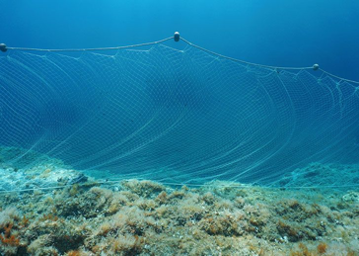
https://www.parc-marin-epmo.fr/
With the awareness that these fishing boats can generate up to 7 tons of waste, consisting of non-biodegradable plastic net, this project is, first of all, fully part of the EU’s plans for the environment and represents an essential goal for the protection marine biodiversity as well as the future of our children.
Projects related to the new LIFE program
European projects and related funding are essential to bring forward innovation in the field of environmental sustainability protection.
The TEFIBIO project
In France, the marine natural park of the Opal Sea in partnership with local producers and private companies (Seabird, Take a Waste, Nautique Conseil) have launched the TEFIBIO project of which 80% of the 750,000 Euros needed are financed by the EU.
The Italian experience of P.Ri.S.Ma-Med
In Italy, the P.Ri.S.Ma-MED project is aimed to innovate the governance and integrated management, in commercial ports, of waste and scraps deriving from fishing, aquaculture and pleasure. It is implemented through the adoption of a fishing / aquaculture / pleasure waste and waste plan. It is a very important project due to the obvious lack of waste storage and disposal spaces in ports. Not to mention the total absence of the practices of reusing the organic fraction.

The project involves all operators in the supply chain: fishermen, aquaculturists, boaters, port authorities and managing bodies
This project is funded under the Italy-France Maritime Territorial Cooperation Program. It involved the Regions of Liguria, Sardinia, Corsica and other public bodies and research institutes.
The ultimate aim of this project is to experiment and then introduce good practices (“Good Practice”) in the fisheries sector. Disseminating the results obtained with other operators in the sector. The ecological islands introduced in the port of Livorno for the recovery of disused fishing nets are an example.
https://www.ansa.it/canale_ambiente/notizie/rifiuti_e_riciclo/index.shtml
Scientific research, European, national or private funding and voluntary cooperation between professionals in the same sector who aim at the same goals are the keys to the success of these projects. Their fundamental importance lies in the conjunction and absolute compatibility between economic sustainability and environmental sustainability. We can only hope that these projects will multiply in Europe, in order to put an end to the pollution problems linked to fishing activities. As it is not enough to remedy the damage already caused, you have to cut off the snake’s head once and for all!


